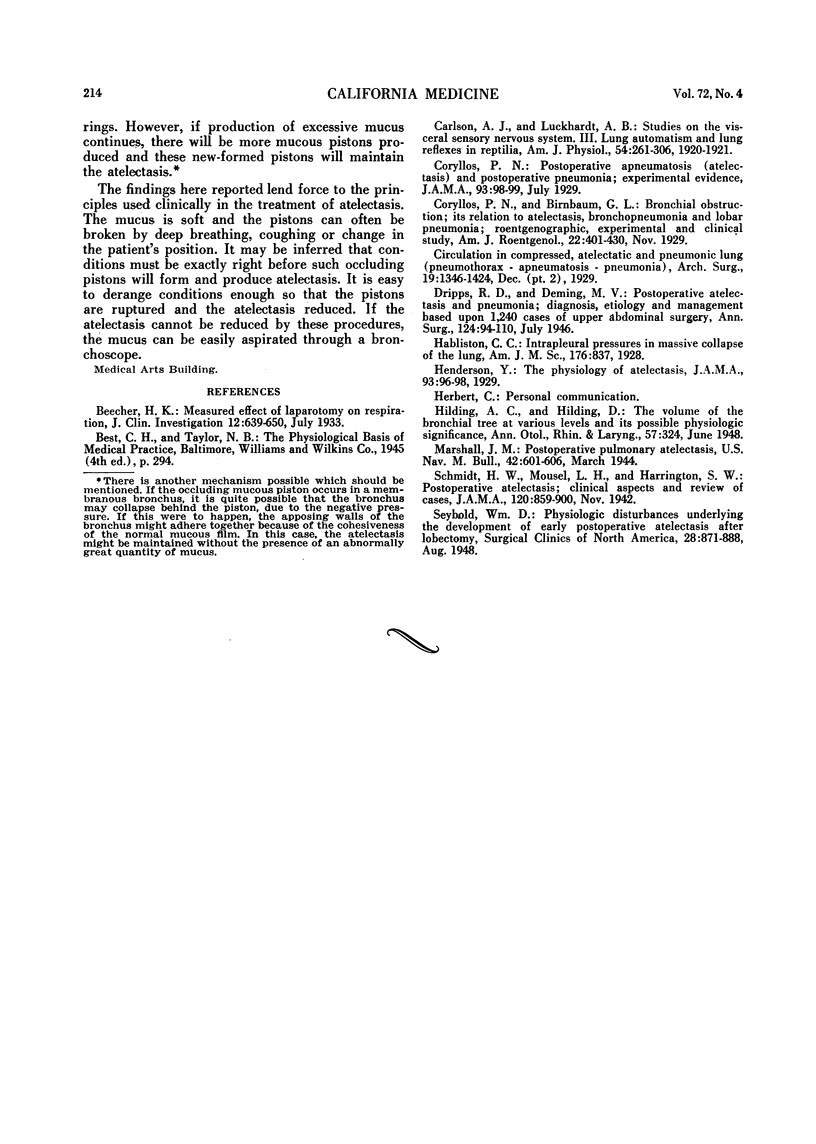Abstract
The primary cause of postoperative atelectasis is the production of excessive quantities of mucus which occlude one or more air passages. This mucus is moved upward in the bronchial tree in successive masses, which carry with them bubbles of air, at the same time as the gases of the air are being absorbed by the venous blood. When all of the air has been removed, negative pressure develops which is equal to the effective ciliary power acting upon the contained masses of mucus. This negative pressure is, in all probability, maintained solely by ciliary action.
Full text
PDF






Selected References
These references are in PubMed. This may not be the complete list of references from this article.
- Beecher H. K. THE MEASURED EFFECT OF LAPAROTOMY ON THE RESPIRATION. J Clin Invest. 1933 Jul;12(4):639–650. doi: 10.1172/JCI100525. [DOI] [PMC free article] [PubMed] [Google Scholar]
- Dripps R. D., Van N Deming M. Postoperative Atelectasis and Pneumonia: Diagnosis, Etiology and Management Based upon 1,240 Cases of upper Abdominal Surgery. Ann Surg. 1946 Jul;124(1):94–110. [PMC free article] [PubMed] [Google Scholar]


